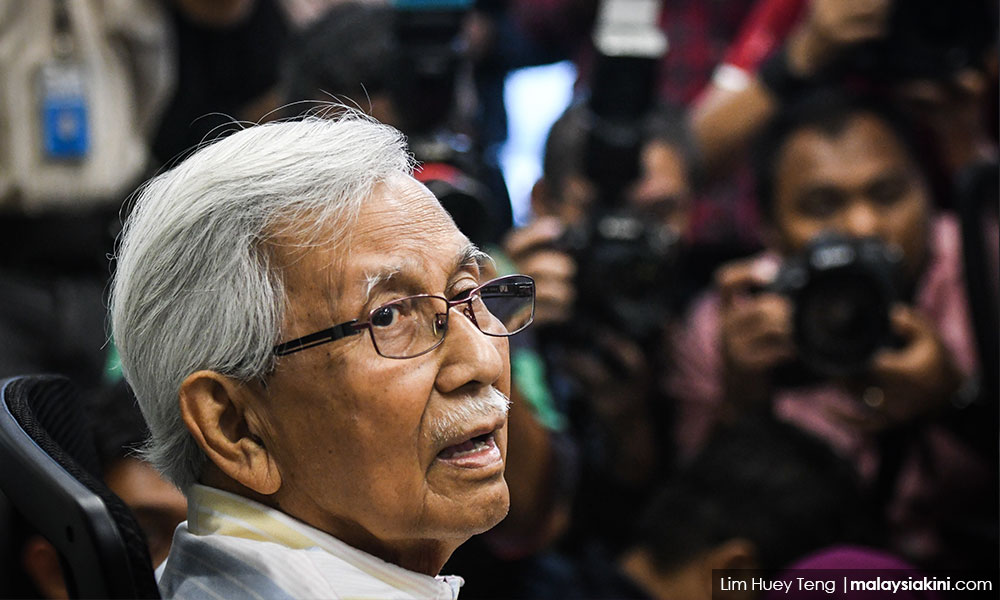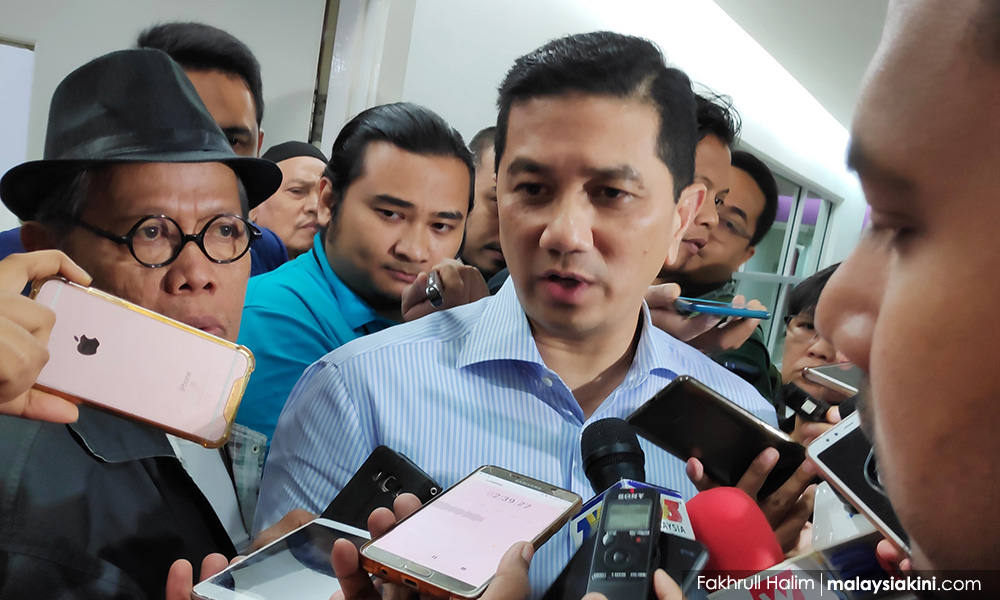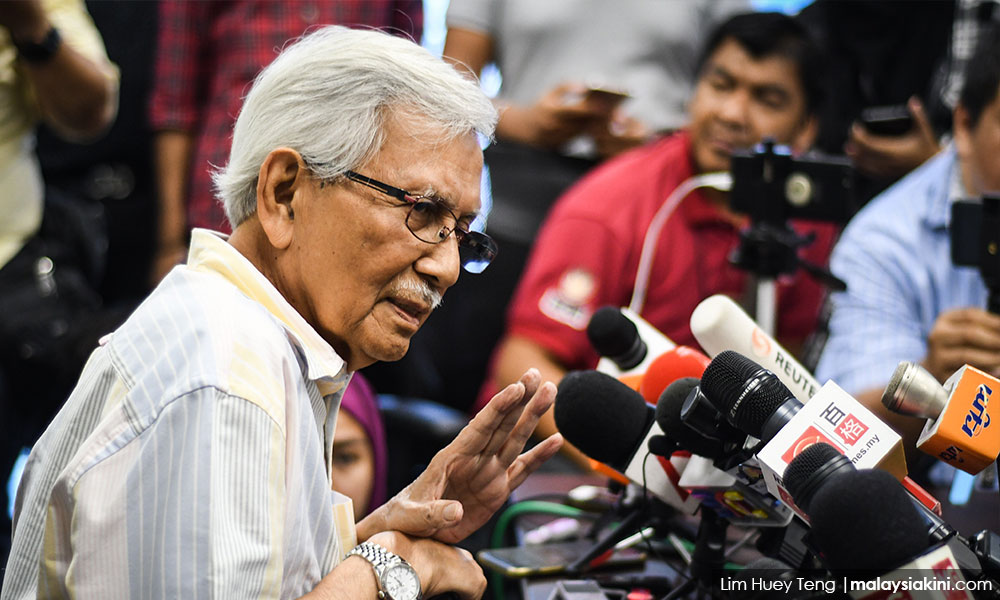
My article, ‘Patronage is king in new Malaysia?’, has elicited much response from those associated with the Pakatan Harapan government. It is highly commendable of them to respond promptly to issues raised in the public domain.
Interestingly too, the content of these responses was strikingly different. Minister of Economic Affairs Azmin Ali, though with no reference to my article, released a statement outlining the functions of his ministry as well as a list of government-linked companies (GLCs) and other institutions under his jurisdiction.
Daim Zainuddin, chair of the Committee of Eminent Persons (CEP), responded directly to my article, arguing I had gone too far by contending that patronage may soon be king. Rais Hussin, Bersatu Supreme Council member, on the other hand, in his article in Malaysiakini, asserted that I had not gone far enough by discussing only patronage as Malaysians should be wary of a bigger problem, the rise of a plutocracy!
Azmin disclosed that his ministry was created to take over the duties of the Economic Planning Unit (EPU) and that most of the 32 institutions placed under his jurisdiction were responsible for promoting or enforcing the bumiputera agenda. This is an important disclosure: economic planning and implementation of the bumiputera agenda have been directly linked under the Ministry of Economic Affairs.
For this reason, the 32 institutions under his ministry include two foundations, Yayasan Ekuiti Nasional and Yayasan Pelaburan Hartanah Bumiputera, key statutory bodies such as Felda, Felcra and Risda, and GLCs such as Amanah Raya and Ekuinas. Azmin also oversees the 13 state economic development corporations (SEDCs) and the Department of Statistics, probably because they have been under the control of the EPU.
Azmin’s statement, however, raises a key question. Going by his stated reasons for the creation of Economic Affairs Ministry, why then were bumiputera-based institutions like Permodalan Nasional Bhd (PNB) and Mara not transferred to his ministry? Instead, the Prime Minister’s Department now controls Malaysia’s leading investment fund, PNB, as well as its only sovereign wealth fund, Khazanah Nasional, both once under the control of the Ministry of Finance.
Mara, whose primary task is to help poor bumiputeras, remains under the Ministry of Rural and Regional Development. Interestingly too, Perbadanan Usahawanan Nasional Bhd (PUNB) and Perbadanan Nasional (PNS) are now under the prime minister when they should be in Azmin’s ministry, based on his statement.

The question arising from Azmin’s statement was, in fact, one core concern in my article. Why were GLCs shifted from one ministry to another in this manner? Indeed, when these important GLCs were transferred between ministries, why was there no disclosure about these shifts?
I had hoped that Daim’s response would provide insights into this question. After all, as chair of the CEP, Daim would know. Instead, his primary contention was that the prime minister has the prerogative to appoint ministers or expand ministries. Daim is correct, but that was not the point of my article.
My other concern dealt with oversight of Khazanah, specifically why there was a need to transfer it from the Ministry of Finance to the Prime Minister’s Department? After all, as Daim also notes, the prime minister, by convention, chairs Khazanah’s board of directors, giving him direct oversight of this GLC.
Moreover, if the prime minister insists that Khazanah was established to fulfil the bumiputera agenda, why was it not placed under Azmin’s ministry? And, if conventions are to be followed, as Daim stresses, should not Finance Minister Lim Guan Eng sit on Khazanah’s board? Instead, Azmin was appointed as Khazanah’s director.
These GLC shifts explicitly undermine a central pledge in Pakatan Harapan’s manifesto, that the prime minister cannot concurrently serve as finance minister. By transferring Malaysia’s key investment-based institutions, Khazanah and PNB, from the Ministry of Finance to the Prime Minister’s Department, does this not amount to an attempt to circumvent the spirit of Harapan’s pledge of a separation of powers to ensure checks and balances in government?
Unanswered questions
A key issue that merits further public discussion is the government’s proposed divestment plan, such as the equity of a leading bank, CIMB. My point was that such divestments should be handled in a well-coordinated and transparent manner. The question I raised merits repeating here: “Will Harapan, through such divestments, move to create a new breed of powerful well-connected business groups, even oligarchs, a trend seen in other countries transiting from authoritarian rule to democracy?”
Indeed, Rais, in his response to my article, contended that I should have built on this point. According to Rais, what we should be wary of is “the rule by the rich for the rich”. Rais further adds his concern about the rise of “a major corporate figure, male or female, who regales in planting his or her stooges all across the government-linked investment companies (GLICs) and government-linked companies (GLCs)”.
Rais’ comments are particularly intriguing as the vice-president of his party, Abdul Rashid Abdul Rahman, at Bersatu’s annual assembly last month, had called on the government to channel projects to division chiefs, a method also to raise funds to win elections “by hook or by crook”. Rashid’s call was actively supported by party members, while dissenting voices in Bersatu were reprimanded.
Given Rashid’s widely-publicised disconcerting views, I would have thought that Daim’s response would have been, in keeping with the pledges in Harapan’s manifesto, to assure us that we need not worry about the emergence of new oligarchs.

Instead, Daim saw my article as one ridden with “mere conjectures”, as well as “false arguments based on weak premises”. I am uncertain why Daim sought to see the issues I raised as such, while the queries I posed went unanswered. To ensure no misrepresentation on my part and to get clarity on Harapan’s mode of governance, let us just deal with the fundamental questions that require an answer:
a) Who decided which GLCs should be placed under which ministry? Was the cabinet consulted, even involved, in determining the placement of these GLCs?
b) If we concur that the prime minister should not serve as finance minister, why then transfer to the Prime Minister’s Department the country’s most important investment-based arms, PNB and Khazanah? Since the government plans to divest GLCs, seen already in the sale of equity in CIMB and IHH Healthcare, should not more stringent checks and balances be instituted to ensure such divestments are done in an accountable and transparent manner?
c) Harapan’s manifesto explicitly states that politicians cannot serve as directors of GLCs. So, why then did Rural and Regional Development Minister Rina Harun of Bersatu appoint politicians from her party to boards of directors of GLCs under her control? This ministry, which controls a huge number of GLCs, had previously been ridden with corruption, arising from the practice of ethnic-based patronage.
d) Prime Minister Dr Mahathir Mohamad referred to the GLCs as “monsters”, but correctly acknowledged that they pursue “noble goals” such as alleviating poverty and redistributing wealth equitably. Harapan’s manifesto asserts that “we don’t even know how many GLCs exist in the country”, an opaqueness that allows “cronies” to “reap the allowances from holding posts” in them. Why then has the government not created an independent committee to determine how many federal and state GLCs there are and then reform them to ensure they focus on achieving these goals?
A response to these questions is imperative if Malaysians are to be reassured that the Harapan government plans to institute real changes to dismantle the patronage-based political system institutionalised by the Barisan Nasional.
TERENCE GOMEZ is professor of political economy at the Faculty of Economics & Administration, University of Malaya and author of ‘Minister of Finance Incorporated: Ownership and Control of Corporate Malaysia’. -Mkini


No comments:
Post a Comment
Note: Only a member of this blog may post a comment.